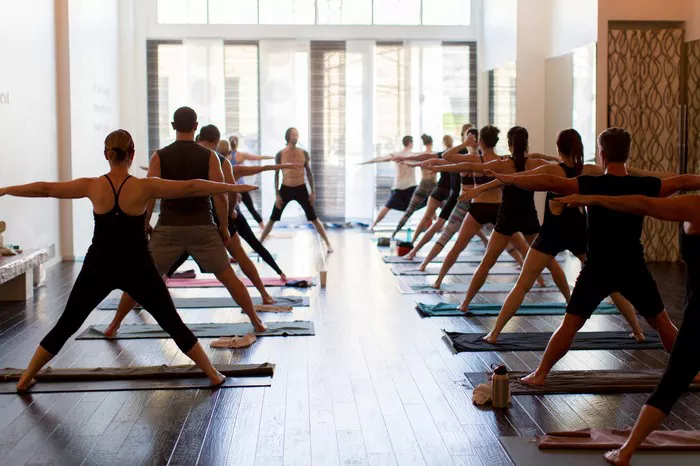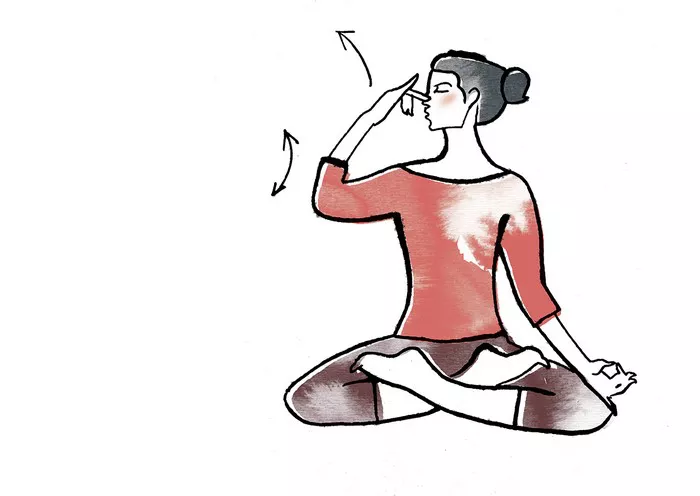CorePower Yoga, a leading name in the fitness and wellness industry, has carved a niche for itself by offering dynamic and energizing yoga classes. With over 200 studios across the United States, CorePower Yoga has become synonymous with accessibility and inclusivity in yoga practice. A common question among new and potential members is whether CorePower Yoga provides mats for their sessions. This article delves into this query, exploring the details and nuances of CorePower Yoga’s policies, the importance of yoga mats, and broader considerations for yoga practitioners.
CorePower Yoga’s Mat Policy
CorePower Yoga does provide mats for use in their studios, but there are specifics and considerations to keep in mind. Here are the key points:
1. Availability of Mats: CorePower Yoga offers mats for rent at a nominal fee. This provision ensures that members who do not own a mat or have forgotten to bring one can still participate in their classes without inconvenience.
2. Hygiene and Maintenance: The mats provided by CorePower Yoga are maintained to high standards of cleanliness. They are thoroughly cleaned and sanitized after each use to ensure a hygienic environment for all practitioners.
3. Encouraging Personal Mats: While mats are available, CorePower Yoga encourages practitioners to bring their own mats. Personal mats offer a sense of familiarity and comfort, which can enhance the overall yoga experience.
Why Yoga Mats Matter
Yoga mats are more than just a surface to practice on; they play a crucial role in enhancing the safety, effectiveness, and enjoyment of yoga. Here’s why:
1. Traction and Stability: A good yoga mat provides the necessary grip to prevent slipping, which is especially important in poses that require balance and stability. This is crucial in avoiding injuries.
2. Cushioning and Support: Mats offer cushioning that protects the joints, particularly in poses that involve pressure on the knees, wrists, and spine. This support is vital for a comfortable practice, especially for beginners or those with joint issues.
3. Defined Space: Having a mat helps define a personal practice space, creating a psychological boundary that can enhance focus and concentration.
4. Hygiene: Practicing on a personal mat ensures that you are only exposed to your own sweat and germs, which is particularly important in a communal setting.
See Also: The Best Lululemon Mat for Hot Yoga
The CorePower Yoga Experience
CorePower Yoga integrates the use of yoga mats into their overall practice approach, ensuring that every aspect of their classes is designed to maximize comfort and effectiveness for practitioners. Here’s how:
1. Class Structure: CorePower Yoga classes are structured to accommodate varying levels of experience, from beginners to advanced practitioners. The availability of mats for rent ensures that everyone, regardless of experience or preparation, can participate.
2. Types of Classes: CorePower Yoga offers a variety of classes, including CorePower Yoga 1 (C1) for beginners, CorePower Yoga 2 (C2) for intermediate practitioners, Yoga Sculpt, and Hot Power Fusion. Each class type benefits from the use of mats for different reasons, be it for stability in a fast-paced sculpt class or cushioning in a hot yoga session.
3. Community and Inclusivity: By providing mats, CorePower Yoga promotes inclusivity, ensuring that no one is left out of a class due to lack of equipment. This aligns with their broader mission of making yoga accessible to all.
Choosing the Right Mat
While CorePower Yoga provides mats, many practitioners prefer to invest in their own. Choosing the right mat can enhance your practice significantly. Here’s what to consider:
1. Material: Yoga mats are made from various materials, including PVC, rubber, and eco-friendly options like jute or cork. Each material has its pros and cons in terms of durability, grip, and environmental impact.
2. Thickness: Mats come in different thicknesses, typically ranging from 1/16 inch to 1/4 inch. Thicker mats provide more cushioning, which is beneficial for joint protection, but thinner mats offer better stability for balance poses.
3. Texture: The texture of a mat affects its grip. Smooth mats can be slippery, while textured mats provide more traction. Consider your personal preference and the type of yoga you practice.
4. Portability: If you plan to carry your mat to and from the studio, consider its weight and how easy it is to transport. Some mats come with carrying straps or bags.
5. Durability: Investing in a high-quality mat can save money in the long run as it will last longer and withstand regular use better than cheaper options.
Environmental Considerations
In recent years, there has been a growing emphasis on sustainability within the yoga community. Many practitioners seek eco-friendly mats that align with their values. CorePower Yoga supports this movement by encouraging the use of sustainable products. Here’s what to look for in an eco-friendly mat:
1. Materials: Look for mats made from natural rubber, jute, cork, or other sustainable materials. Avoid mats made from PVC, which is not biodegradable and can release harmful chemicals.
2. Manufacturing Practices: Consider brands that use environmentally friendly manufacturing processes, such as reduced waste and non-toxic dyes.
3. Durability: A durable mat is more environmentally friendly because it needs to be replaced less often, reducing waste.
4. End-of-Life Options: Some brands offer recycling programs for old mats. This is an excellent option to consider to minimize your environmental footprint.
Enhancing Your Yoga Practice
While a good yoga mat is essential, there are other tools and practices that can enhance your yoga experience at CorePower Yoga:
1. Blocks and Straps: These props can help you achieve proper alignment and extend your reach in poses, making them accessible and safe.
2. Towels: In hot yoga classes, a towel can provide extra grip and absorb sweat, enhancing comfort and hygiene.
3. Hydration and Nutrition: Staying hydrated and maintaining a balanced diet supports your overall wellness and yoga practice. Consider bringing a reusable water bottle to class.
4. Mindfulness and Meditation: Incorporating mindfulness and meditation into your practice can enhance the mental and emotional benefits of yoga. CorePower Yoga often includes elements of meditation in their classes, providing a holistic approach to wellness.
Conclusion
CorePower Yoga’s policy of providing mats for rent demonstrates their commitment to making yoga accessible to everyone. By ensuring that equipment is available and maintained to high standards of cleanliness, they create an inclusive environment where all practitioners can thrive.
Investing in a personal mat can further enhance your practice, offering comfort, familiarity, and alignment with your personal values, particularly if you choose an eco-friendly option. Ultimately, whether you rent a mat at CorePower Yoga or bring your own, the focus remains on the transformative power of yoga and the benefits it brings to body, mind, and spirit.
By understanding the importance of yoga mats and the options available, you can make informed choices that support your practice and contribute to a positive and sustainable yoga community. CorePower Yoga’s approach ensures that every practitioner has the opportunity to experience the full benefits of yoga, regardless of their level of experience or preparation.



















